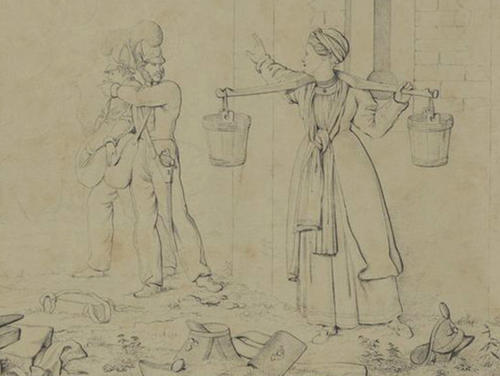German Military Encounters with Eastern Europe: Experience and Commemoration, 1812-1914
It is estimated that that over 100,000 German soldiers accompanied Napoleon’s Grande Armée into Russia in 1812. Many never returned, but those who did brought fantastic, and sometimes horrifying, tales of Eastern Europe. Many shared their experiences with a wide audience by publishing their diaries and memoirs in the post-war period. German civilians who experienced Russian military might as the Tsar’s armies crossed Central Europe in 1813 added their accounts to veterans’ reminiscences. These war stories found a ready audience in nineteenth and early twentieth-century Germany. The reading public was eager to vicariously experience the hardships and adventure of warfare and 1812 became, along with the Wars of Liberation, a dominant literary topos within the popular memory of the Napoleonic Wars in Germany.
Although historians had emphasized the particular importance of the ‘East’ for the German imagination, political calculation and identity, few had previously addressed the role the Napoleonic wars played in shaping popular impressions of the ‘East’ and how these fed into contemporary political, military and diplomatic relations. The project opened two new, interrelated research avenues by focusing on the German experience, and later memory, of the period between 1812 and 1815. First, it explored the transition from the ‘communicative memory’ of eyewitnesses to the ‘cultural memory’ in the post-1860s period. A key theme was the posthumous reworking of contemporaries memories against the background of the changing geopolitical situation. Secondly, the project considered the role autobiographical writing from the Napoleonic wars played in shaping and consolidating images of Eastern Europe and, by extension, Germany, in a longue durée perspective. It examined how these narratives influenced, and were in turn influenced by, broader attitudes towards Eastern Europe. It explored the dominant themes and perceptual frameworks through which German soldiers and civilians represented their experiences in Eastern Europe, while asking how those representations changed as a result of wider political and intellectual developments in the nineteenth century.
There had been a wealth of research literature on both Ostforschung and the period between 1813 and 1815. However, the former revolved around an intellectual, social and political elite, while the latter concentrated on the construction of German nationalism in opposition to a French Feindbild during the Wars of Liberation.
Yet the experience of Eastern Europe between 1812 and 1815 also played a significant role in shaping German national identity and the mental map of Europe. The project thus broke new ground by bringing two historiographical traditions together. It examined, on the one hand, the German Kriegserfahrung of Eastern Europe between 1812 and 1815 and, on the other hand, the Erinnerungskultur that subsequently developed in the nineteenth century. By means of its interdisciplinary approach, the project tapped into a number of different historical strands, encompassing the ‘new’ military history’s interest in the cultural legacies of warfare and commemoration within the context of German relations with the East.
